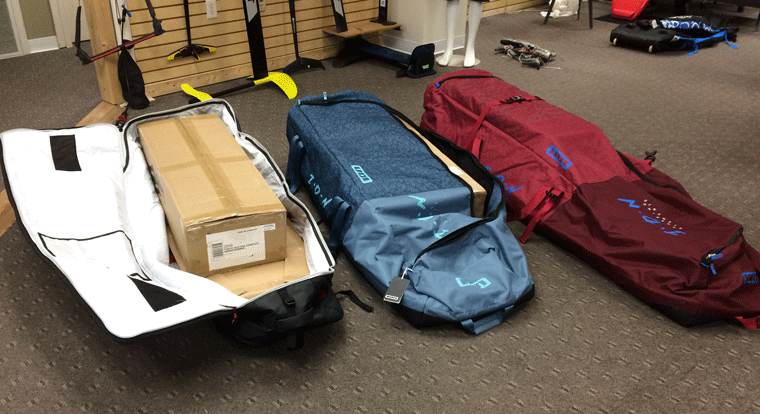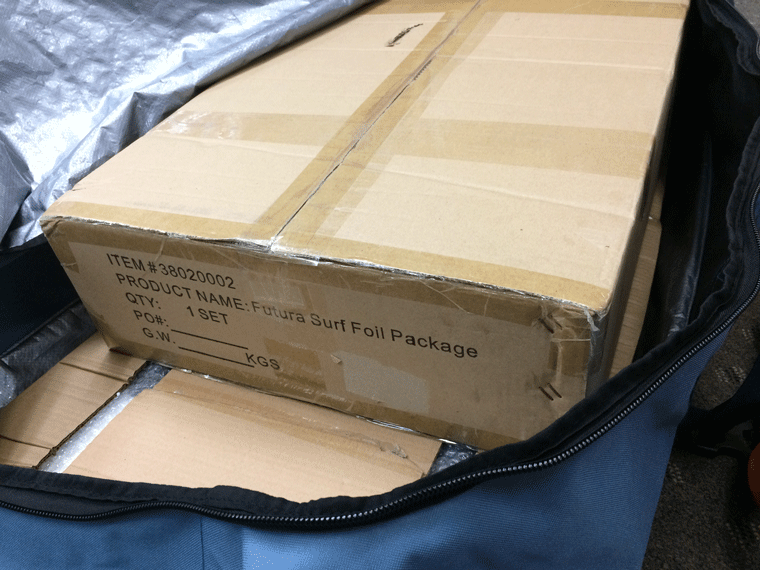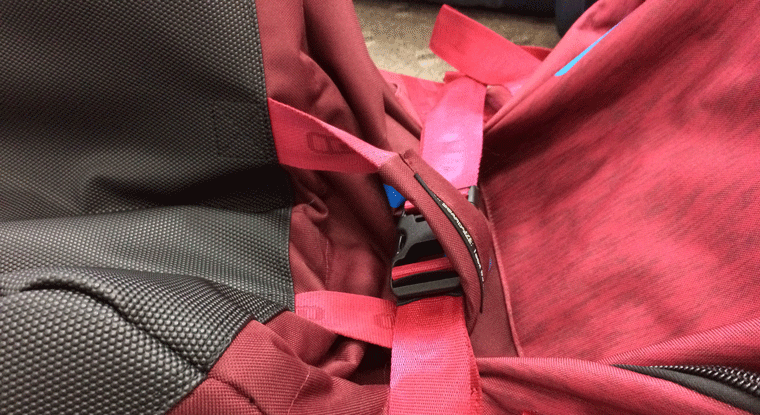How to Pack your Hydrofoil for travel
How to Pack your Hydrofoil for travel
Hydrofoils can be difficult to travel with at times. They are awkward, oftentimes sharp, and can be easily damaged. The kiteboard industry has not come up with a definitive plan to help you with that issue quite yet. Luckily, we package foils for travel every day in our warehouse and our globetrotting crew has a couple insights that will help you with your next foiling vacation.

#1 Keep your packaging
By keeping your shipment packaging, you have a way to pack your foil and foil board without any additional investment. If you plan to travel immediately this also eliminates any guesswork since you can just toss it into your travel bag. Most foils ship in a block of foam that have cutouts specifically shaped for your foil parts. We find the safest way for your hydrofoil to travel is to toss that box right into your gear bag. Crushing the corners with your hands will help reduce wear points on your travel bag from the box edge. Boards also come packaged with foam and cardboard protecting them. After being removed from the shipping box they can be put directly into your gear bag.
If you wore out your packaging or tossed it out without thinking of its usefulness, fear not. There are a number of soft-side foil bags that can be purchased to help protect your foil and your other gear from damage. For your board, padding around the edges with soft items is a must. If you want to play it safe, buy a day use board bag for extra protection.
- One of the nicest and most versatile foil bags is the Dakine Foil Quiver bag. It boasts a roomy 110x40x15cm space with room for a foil or two and space to spare at only 3.8 lbs. We prefer to pack any extra space with soft items such as wetsuits, towels, and boardshorts to add extra padding.
- If you do not already own a rolling gear bag, we have a Foil Travel Package that includes everything you need.

#2 Get the right sized bag
Getting the proper gear bag is crucial in protecting your equipment during travel. A good rule of thumb is to buy a bag at least 20 centimeters longer than your largest board. This will allow you to have some room for padding. Don’t forget to double check the width and height of your foil box and your widest board as they can be wider than some kiteboard travel bags. As you can tell in the video, some packages are going to be a tighter fit. If you are not sure, get the larger one and you will thank me later. Some bags will allow you to fold over the end and secure it with a middle strap to shorten the bag if you do not need all that length. This is a favorite trick of mine as it adds some extra protection to the nose of your boards. It also allows some extra room for souvenirs on the trip home.

- Some of our favorite bags are the Ion Core 139 ,152, 165, 186cm Gearbags. At only $149 for every size they are affordable, light, and have wheels. One of my favorite features of this bag is simply its width. Finding a bag wide enough for some foilboards and surfboards can be tough. This bag gets it done, and its rectangular shape makes the most of every dimension. Another nifty feature is the included accessory pouch. This nylon pouch can hold hardware, fins, and tools that could damage your kites if left to wander freely around the bag.
- Sizes: 139
- Bag Outside: 142x52x40 cm
- Sizes: 152
- Bag Outside: 155x52x40 cm
- Sizes: 165
- Bag Outside: 170x52x40 cm
- Sizes: 186
- Bag Outside: 190x55x30 cm
Written and produced by Tucker Vantol, Ryan (Rygo) Goloversic
Tucker Vantol
Mackite's resident surf and "Hydrofoil junkie." You can either catch him on the phones or on the water at dawn testing new gear. He is proficient at myriad sports, a shaper, and passionate about getting his water time. When he discovered kiteboarding it took over as his predominate sport. The same could be said about hydrofoiling.
Recent Posts
-
Kiteboarding Tricks | How To Do A Backroll Hat Drag
You can use a little creativity to switch up even the more basic tricks and add a little f …26th Jul 2024 -
KT Ginxu Step-Bottom and Foil Drive Systems | A Perfect Match?
The step-bottom feature of the KT Ginxu foilboards is a big help in releasing the surface te …24th Jul 2024 -
Starboard Ace Air Inflatable Wing Foilboard Review
It's Wing Wednesday, and today Tucker's got an inflatable foilboard, the 2024 Starboard Ace …23rd Jul 2024




